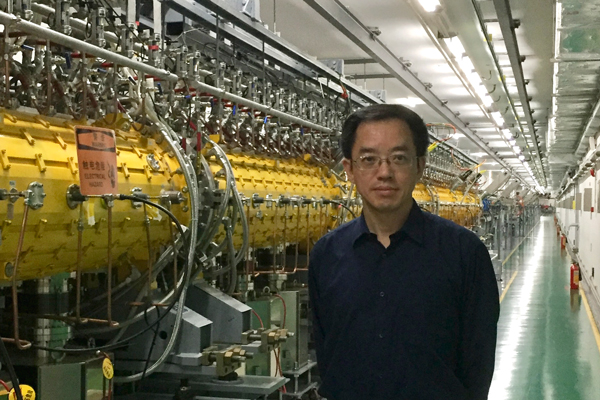- Home
- About Us
- Organisation
- Biographies of Directors and Heads of Division
- Qing Qin, Director, Accelerator and Source Division
Qing Qin, Director, Accelerator and Source Division
Chinese, PhD Particle and Nuclear Physics, University of the
Chinese Academy of Sciences (UCAS)
 Before joining the ESRF, Qing Qin was Deputy Institute Director and Head of the Accelerator Division at the Institute of High Energy Physics of the Chinese Academy of Sciences (IHEP-CAS) in Beijing, where he headed the operation of BEPC and China’s 4th generation light source, High Energy Photon Source (HEPS), from its design to construction until spring 2020.
Before joining the ESRF, Qing Qin was Deputy Institute Director and Head of the Accelerator Division at the Institute of High Energy Physics of the Chinese Academy of Sciences (IHEP-CAS) in Beijing, where he headed the operation of BEPC and China’s 4th generation light source, High Energy Photon Source (HEPS), from its design to construction until spring 2020.
Qing’s main contribution to accelerator physics covers the different lattice designs with dynamic aperture optimization for storage rings, impedance & collective effects including two-stream effects induced by electron clouds or ions, and beam-beam interactions. He has been involved in all the large accelerators in IHEP, from design to construction, and from commissioning to operation.
Qing trained as an accelerator physicist at the IHEP-CAS and at the Beijing Electron Positron Collider (BEPC), the first large scientific facility in China from 1988, which is also known as a parasitic synchrotron radiation facility (BSRF). In the mid-1990s, he worked at CERN for the accelerator physics design of the LHC. He was later engaged in the luminosity enhancement of BEPC and its upgrade project (BEPCII), and led the team to achieve the design luminosity in 2016. In addition, he initiated the conceptual design and the accelerator physics study of the Chinese Spallation Neutron Source in Guangdong Province, China. Qing holds the title of Boya Distinguished Professor of Peking University. He is also a member of the Machine Advisory Committees of colliders and light sources including LHC, SuperKEKB, MAX-IV, SKIF.
From 1 November 2020 and for a period of five years, Qing Qin will head the Accelerator and Source Division. He will oversee the operation of the ESRF accelerators and insertion devices, including the continued commissioning and preventive maintenance programme of the EBS storage ring and its future development.



